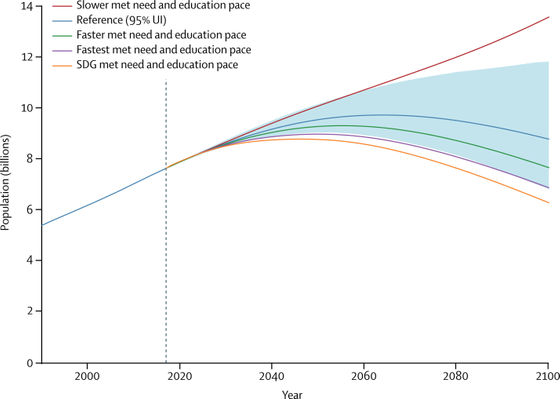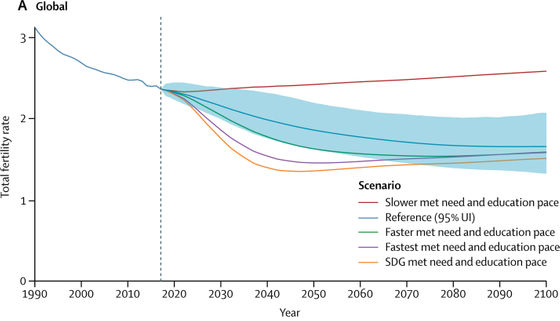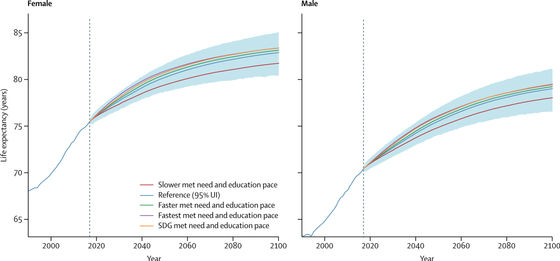Prediction result that the population will be halved in 23 countries including Japan in 2100

A research team at the
Fertility, mortality, migration, and population scenarios for 195 countries and territories from 2017 to 2100: a forecasting analysis for the Global Burden of Disease Study-The Lancet
https://www.thelancet.com/journals/lancet/article/PIIS0140-6736(20)30677-2/fulltext
Fertility rate study predicts'jaw-dropping' crash as fewer children born around the world | London Evening Standard
https://www.standard.co.uk/news/world/global-fertility-rate-drop-a4498526.html
The published study derives the population, birth rate, and life expectancy of 195 countries and regions including Japan from indicators such as the birth rate, immigration rate, and death rate. The birth rate is estimated as a function with variables such as educational achievement and contraception rate.The immigration rate is the social demographic index, the gross population increase rate, the number of deaths due to war and natural disasters, and the mortality rate is the basic mortality rate. It is estimated as an autoregressive moving average model that integrates scalar factors related to mortality risk.
The graph below shows the forecast of the world population calculated in this way. The horizontal axis represents 'Year' and the vertical axis represents 'Population'. From 'Slower met need and education pace' to 'SDG met need and education pace (contraceptive rate and education achievement defined by the UN Sustainable Development Goals )' Graphs for each of the five scenarios are included. It can be seen that in most scenarios, the population peaked around 2060 and began to decline, and the rate of decline accelerated thereafter.

In the most likely scenario, the world population will reach its peak in 2064 at 9.73 billion and will reach 8.79 billion in 2100. From 2017 to 2100, the number of children under the age of five will decline from 681 million to 410 million, while the number of older persons aged 80 and over will decline from 141 million to 866 million. Increase to people. The average life expectancy will increase significantly from 32.6 to 46.2.
On the other hand, the global fertility rate is below. The vertical axis is 'Total fertility rate (

The average life expectancy is below. The graph on the left is 'Female' and the graph on the right is 'Male'. The vertical axis is 'Life expectancy'. In each scenario, the average life expectancy will increase steadily in the future, and the gap in the average life expectancy between countries and regions will shrink from 6.9 to 3.6 years from 2017 to 2100. It is said that 10 countries have an average life expectancy of less than 75 years old in 2100, and 7 of them are sub-Saharan African countries.

Japan is often mentioned in the original paper, and it is not only predicted that Japan's birth rate in 2100 will be 1.32, but is also listed as 'a country whose population will be halved by 2100' together with Thailand and Spain. The Japanese population peaked at about 128 million in 2017, and will fall below 53 million in 2100.
In addition, the “economy” is also a forecast target as an element linked to the population. The study predicts that China will become the world's largest economy by 2035, but the United States will return in 2098. It should be noted that Japan is also mentioned in the economics section, and it is stated that 'in 2100, Japan maintains its position as the world's fourth largest economy in spite of a significant population decline.'
Related Posts:
in Science, Posted by darkhorse_log







